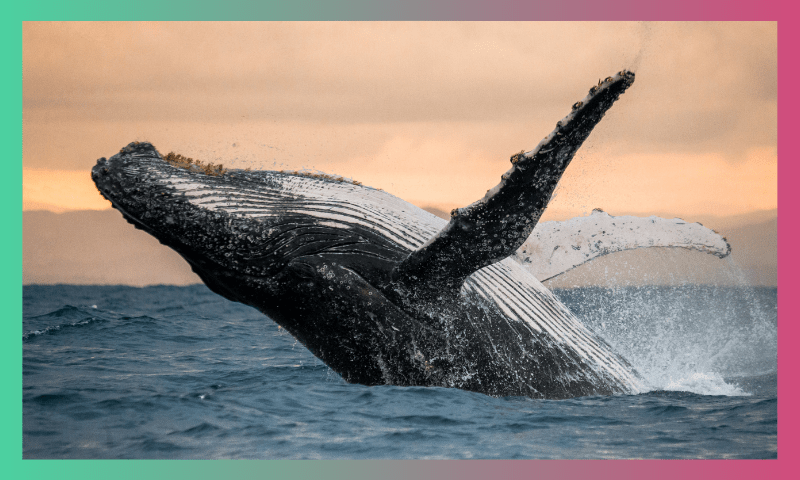The oceans are full of remarkable creatures whose existence is not only astounding, but also, essential for the sustenance of this entire planet and the creatures residing within. If we ask you the largest animals living on the planet? You will be quick enough to answer: WHALES! Their enormous size is often a topic of hefty discussions. The largest of the whales is The Antarctic Blue Whales. They weigh about 4,000,000 kgs, equivalent to about 33 elephants ( about 1814369.48 kgs), and can be as long as 98 feet. Unbelievable right? But, their being and significance in the ecosystem are as fascinating and hefty as their size.
Whales play an integral role in maintaining the carbon dioxide levels in the environment. Have you ever heard of phytoplankton? It is a microalga growing all across ocean floors. Similar to terrestrial plants, they require sunlight, carbon dioxide, water, and other necessary nutrients like irons and phosphates to perform photosynthesis and assure healthy growth. These phytoplankton may seem microscopic in size. But, they have astronomical significance in capturing the earth’s CO2 gas. They sequester as much as 40% of carbon dioxide gas from the environment, four times more than the largest rainforest in the world, The Amazons. The survival of the phytoplankton is directly dependent on the whales. They are the pivotal providers of nutrients to this microalgae species. The giant mammals prey in the deep ocean waters but come to the surface to breathe and defecate. Their feces are substantially rich in iron that help in fertilizing phytoplankton across the ocean. Given their cosmic immensity, no other animal or artificial means can do the ocean bed fertilization except them! Global warming is a cosmic threat to life on our planet. With every passing year, the amount of greenhouse gasses ( traps heat) like CO2, is increasing in the atmosphere. The rise in temperature and sea levels is a great matter of concern. Climate change is no longer a phenomenon in papers. But, can be felt by people across the globe.

With the ever-decreasing whale population and increase in carbon emission, it is a tough road ahead. All living and nonliving beings are formed of carbon atoms. When a large creature like a whale is hunted on the land, it releases millions of tons of Carbon dioxide into the atmosphere. Whereas, if it dies of natural causes in the ocean, its body sinks to the river bed providing phytoplankton CO2 resources without causing any harm to the environment. Killing a whale is equivalent to cutting down thousands of trees. A tree on average absorbs 22 kilograms of Carbon dioxide from the atmosphere. Whereas, a whale can sequester 33 tons of CO2 in a year. Just take a moment to analyze this information and realize the astronomical significance of whales in the sustenance of this entire planet. There are almost 76 species of whales grouped into 10 families. But over the last decade, there was a 30% decrease in their population which is quite concerning given their prominence in the ecosystem. Today, 10 out of 13 great whale species are endangered. The largest of all the species is Antarctic Blue Whales. Unfortunately, they are critically endangered. According to statistics recorded in the year 2018, There were about 3,000 of them left. Other critically endangered species include North Atlantic Right Whales and North Pacific Right Whales.

The population has dropped to mere hundreds, the lowest in the last twenty years. Today, the magnificent creature is facing grave threats in its habitat. There are numerous causes behind the constant dangers: habitat contamination, whaling, entanglement in fishing gears, ship strikes, ecosystem change, oil spills, overfishing, industrial disturbances, etc. Many developed countries like Japan, the USA, Norway have continued to hunt whales for their oil and meat. We suggest adding whale conservation as one of the clauses in the Paris Agreement. It is required to enforce a firm ban on this unjust and brutal practice. Fishing practices and other industrial activities should be regulated to make sure safety of whales in the region. Whales tend to achieve sexual maturity in 5-10 years and have low reproductivity rates. When we combine these natural factors with manmade threats, the situation turns out to be quite alarming. Restoring the whale population should be considered as one of the main tools in combating climate change. Proper application of scientific practices, circulation of general awareness, and law enforcement can together play a vital role in saving whales and solving the environmental crisis.
If you have any queries related to this article, you can enter your questions in the comment section. Our Team will reply to you at the earliest!

